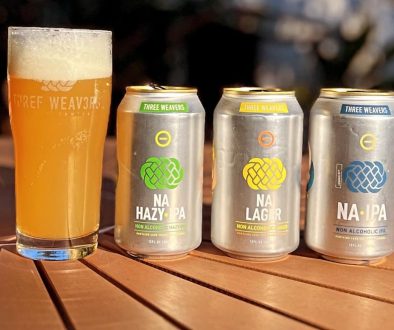When Was The Last Time You Had…
I come to praise the forgotten beers, the discarded, overlooked, and unloved beers. The perfectly good and delicious beers that have either been chewed up and spit out by the hype machine, or had their moment and disappeared, or maybe just never got a break.

They’re not any kind of IPA, or imperial stout. They’re not “wild,” or sour, or brett-laced. They aren’t gose — the popularity of which still dumbfounds me — and they aren’t porters or saisons. Even pilsner isn’t in this group anymore; we’ve apparently decided pilsner is cool, so long as it has plenty of hops (usually not the classic ones, but who’s checking?). And I’m not talking about the polarizing pumpkin beers.
No, I’m thinking about a week I recently spent in Düsseldorf and Köln, drinking nothing but altbier and kölsch, and relishing each sip, each subtle difference among the house breweries. Only one choice at each place, or at most two where an unfiltered version was offered. It was wonderful, and you could drill down on the quality or just drink, gloriously unconcerned.
Or maybe it’s about places like the brewpub down the street from my new house, where they make the same six beers they’ve made since they opened (okay, the sixth was added five years ago), with two seasonals (usually also traditional styles). You don’t see “copper ale” many places anymore, or a smooth, chocolatey brown ale like theirs, but as I’ve gotten off my geeky high horse, I order them a lot more frequently, because they’re good.
How about barleywine? Another brewer came back from a conference in Yakima with a story of how his colleagues seemed to have decided that “barleywine is dead. Who needs it? We have imperial IPA.” Really? What about Fuller’s Vintage Ale? That most definitely still floats my great-big-glassful boat.
Here’s one: anyone remember “Amber”? Amber used to be huge, one of the most common words on a craft beer label, and now it’s mostly found in defiance: Tröegs insists on tagging their Hopback and Nugget Nectar as ambers, for instance, and Rogue still makes their American Amber.
People tell me these styles are boring, that they just don’t bring enough flavor to the game, that they’re not exciting. Yet think about them in terms of food. Most of us still eat baked potatoes, steamed broccoli, grilled pork chops, fresh minestrone, a good pair of fried eggs. All of those foods are as stolid and “boring” as a kölsch, but when they’re well-made, they’re the heart of a good meal.
It reminds me of something a brewer said when I reacted with surprise over how good his blonde ale was. “I try to make the very best blonde ale I can,” he said. “Because people drink it, and because my name’s on that beer, too.” It was like an English summer ale; light, tasty, refreshing, and with a great dry maltiness. I had another.
And that is often the key to these underappreciated styles. These are beers that you drink in a row, not tap-dancing along the handles, not ripping sideways through a sample pack. The bartender cocks an eye at you and your empty glass, or you consider the cold five-pack in your fridge, and you nod: yup, I’ll have another. Okay, maybe one more barleywine.
Trying the new beers is fun, and they’re often great. But sitting at that table in Düsseldorf is fun too, as the waiter comes by and drops off another fresh-as-bejayzus altbier without even asking. What would he ask? It’s all there is!
Instead of trying the next iteration of the styles you’ve been drinking for the past year, why not venture outside, and see what you’re missing. Have a few, and relax with old friends, some classic chow, in a familiar place. Stop and smell the copper ale.
Lew Bryson is an accomplished beer and whiskey writer. Please follow this link for more info about Lew: http://lewbryson.blogspot.com/p/about-lew-bryson.html



